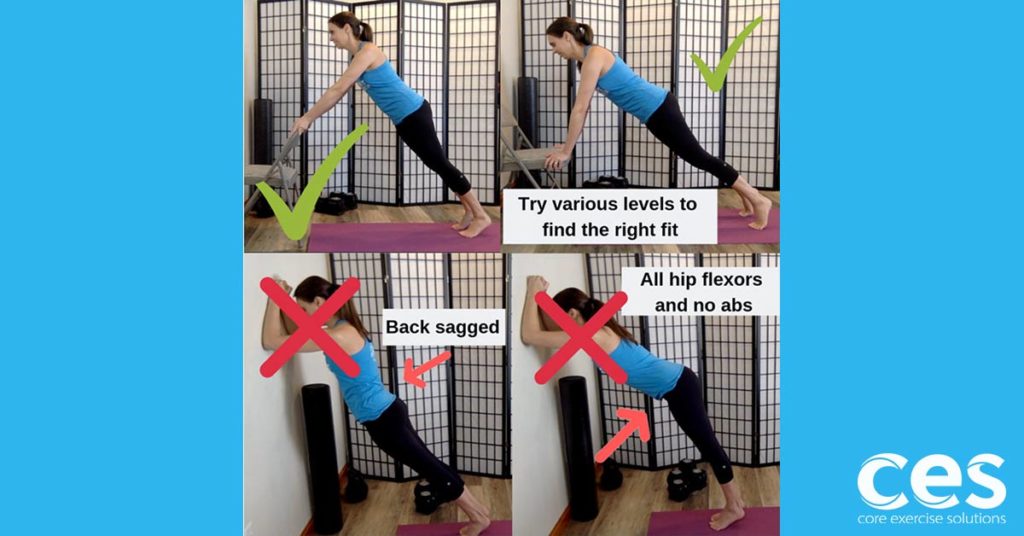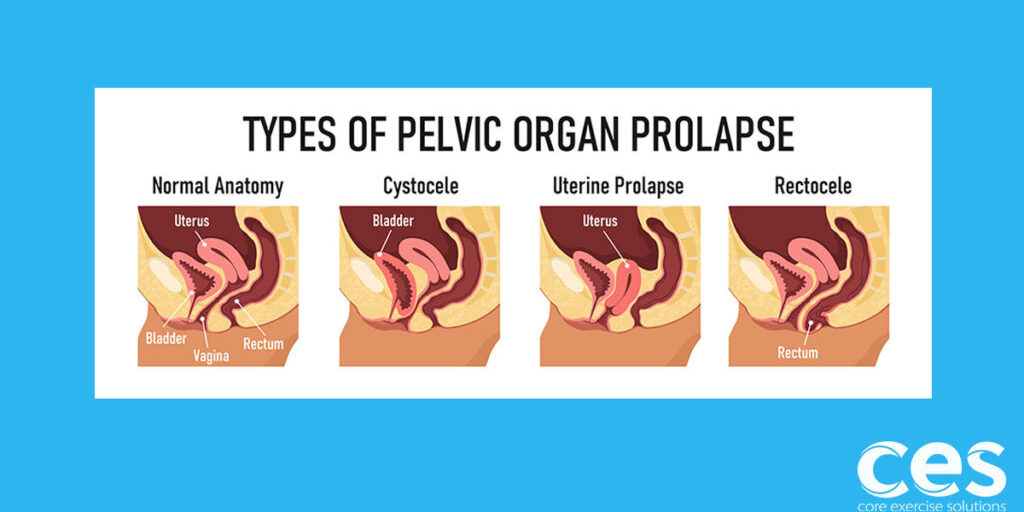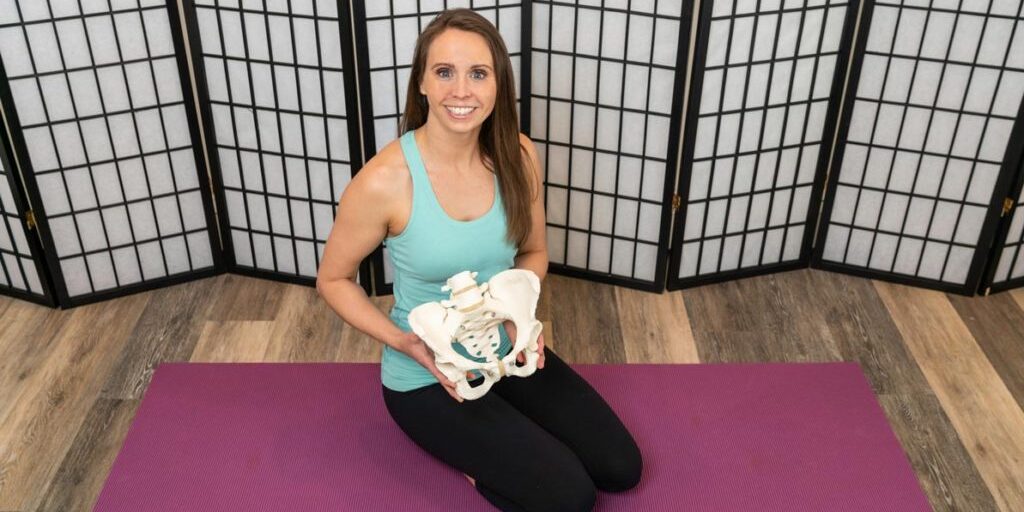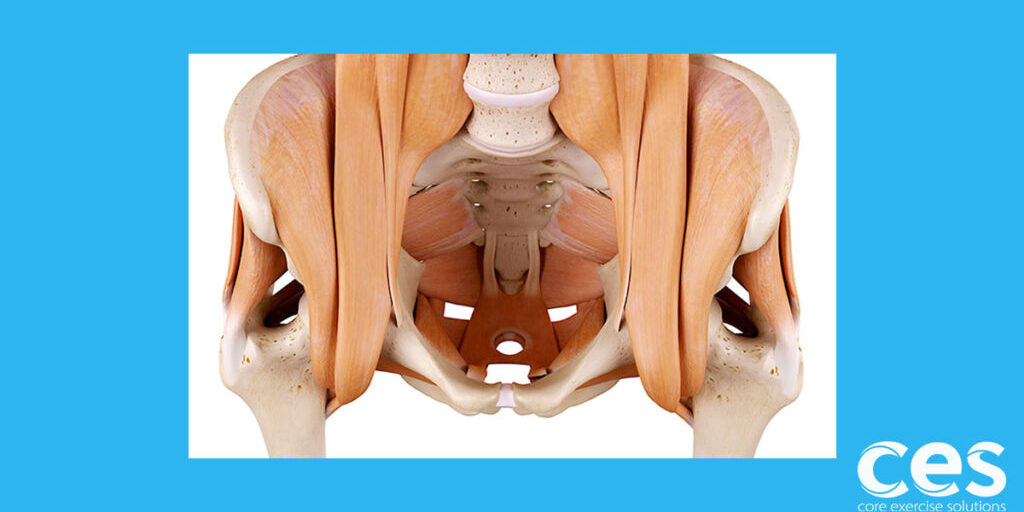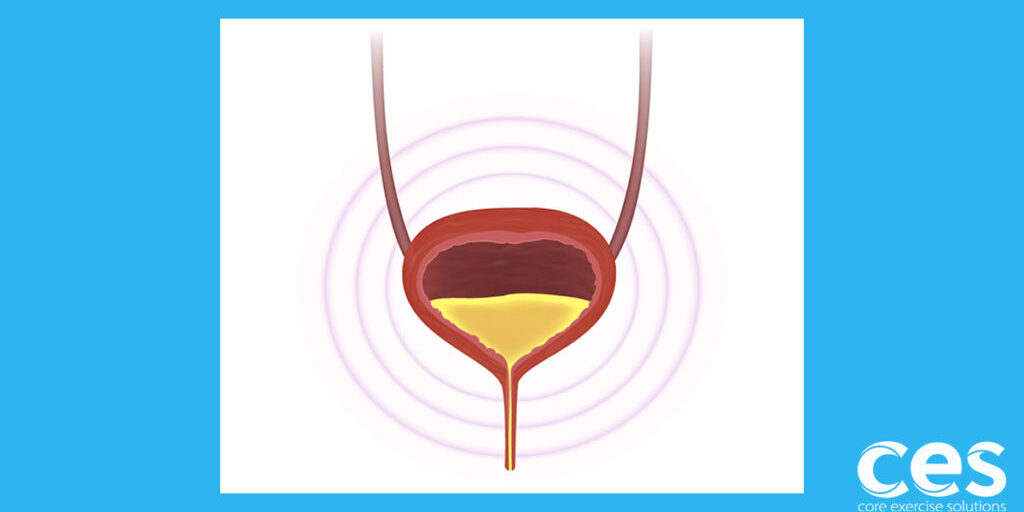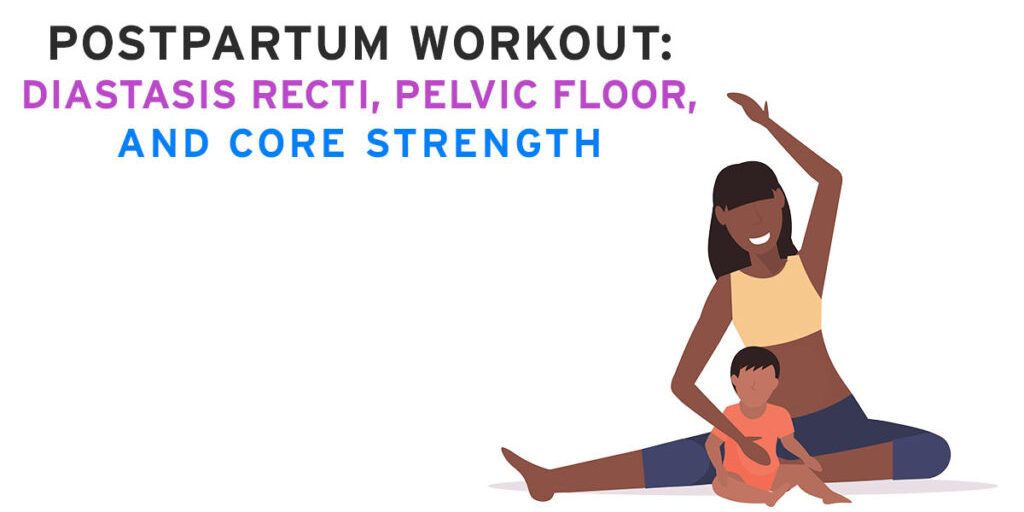Can you pass the plank challenge?
Should you even do front planks?
Are they safe for a diastasis? Can they hurt the pelvic floor?
Is there a right or wrong way to do them? What if your shoulders always feel tight?
Like with all exercises, the answer is maybe. Let’s sift through a few different scenarios to see if one fits your situation and gives you the advice you’re looking for.
Before you read any further— pause, pull out your phone and turn on the video camera. Prop up your phone and record yourself doing a plank. We’ll use this video to analyze whether or not you’d pass the plank challenge at the end of this article.
Should you do front planks?
Let’s first take a look at why you would do a front plank. Front planks can be a very effective exercise. If done correctly, they strengthen your entire core, serratus anterior (key muscle for upper body connection) and improve postural alignment.
Planks done incorrectly can hinder progress and increase the risk of abdominal imbalances, worsening diastasis and pelvic floor issues, shoulder pain, neck, hip and back tightness and pain. Whew! So, let’s do a few checks to make sure planks are beneficial for you!
When doing front planks, you’ll need to focus on recruiting your transverse abdominals -TAs- (deep abdominal muscles). When these muscles aren’t recruited, you will often see abdominal doming and potentially pressure down on the pelvic floor or overly stressing a diastasis.
Is a front plank good for pelvic floor recovery and what cues should you think about?
For pelvic floor focus, I’d like for you to play around with contracting your pelvic floor and see how that feels on your lower abs. Are you able to contract your abs better? How does your pelvic floor feel after? Tight? Good? If it feels achy, that’s a sign that you did too much pelvic floor contraction. Keep in mind there isn’t a cut and dry answer here. Someone with lots of pelvic floor weakness that’s very loose should use this opportunity to contract and strengthen. Someone with tightness would be better served not contracting and focusing on relaxing on the inhales. You might also fall somewhere in between. Much like clothing, one-size fits-all recommendations rarely ever fit anyone well!
Planks can be a key part of pelvic floor recovery, but not if you’re bearing down. So when you do a front plank, think about gently lifting your pelvic floor just a little. This will help your TAs contract and provide balance to your abs, making them appear a little flatter instead of having that big rectus domed shape. Click here to read more about rectus doming.
What if you have pelvic floor tightness and contracting during exercise makes it worse? Then, don’t contract. Focus on contracting your lower abs just a little like you’re trying to draw your hip bones together. Then, really focus on inhaling down into your pelvic floor and into your low back as you hold the plank.
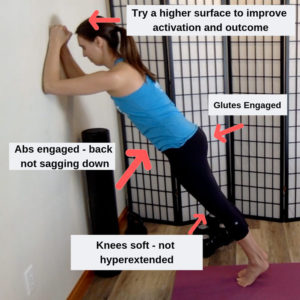
If you suffer from leaking or a front prolapse (cystocele), then gaining strength in this front lower abdominal area along with the front of your pelvic floor can speed up your recovery! Just be sure you don’t do planks so hard that you start cheating and bearing down, or slip into a shallow breathing pattern.
Let’s talk breathing. How should your breathing be directed during a plank? Doing a front plank is the perfect time to focus on establishing your “zone of apposition” or in simple terms, optimal alignment for correct diaphragm function. In order for the diaphragm to move down in all directions, you’ll need some back body expansion, not just belly expansion. So, doing a front plank is a perfect time to work on holding the front braced (allowing for some expansion on each inhale but not a ton) and focus on seeing how much you can get your back and sides to expand.
(Read more about chest vs belly breathing here.)
(Read more about breathing for the pelvic floor here.)
If you practice this 360-degree deep breathing pattern in the plank, then you’ll feel great after exercise. Little to no shoulder or neck tightness and a wonderful feeling of being able to get a big, deep breath.
What happens if you brace your core too hard? You stop this deep breathing pattern and the air and pressure goes into your neck and shoulders and creates tension. If planks leave your neck feeling tight, then I’d focus on your breathing. While you hold the plank, breathe down, deep into the bottom of your lungs and move your head side to side while you do it. Moving your head around helps you feel whether or not neck tension is building and this small movement can help you relax and let go of those neck muscles while allowing your abs to work.
If you know you’re breathing well but still get neck tightness, your serratus probably needs some strengthening.
(Checkout serratus exercises here.)
Play around with arm positioning to see if that helps neck tightness and core activation. Try pushing away, engaging your delts more. Then try pulling your arms under you more to engage your lats. See which way feels better. It may also pay to utilize both ways since they recruit different muscles.
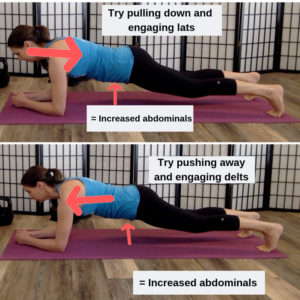
A couple other things I’d like for you to play around with in your planks include glute squeezing. See if squeezing your glutes helps increase your abdominal and pelvic floor contraction. Relax your glutes and see if that decreases your abdominal and pelvic floor contraction. Which feels better to you? Play around with how far you tuck your bottom under and how much doming it causes. Some tuck can be great for really enhancing an abdominal contraction, but too much tuck could cause pressure down on the pelvic floor and increased doming. What does too much tuck look like? That’s going to depend on your natural starting point and how your muscles respond, so play around with it and see what feels better. Sometimes I get clients to tuck just a bit and they are blown away by how much more they feel it in their abs and how it takes all the work out of their back.
(Learn more about abdominal doming here.)
Are planks safe for diastasis?
You guessed it, the answer is maybe! In some cases, front planks can make your diastasis heal faster, but in other cases, it can make your diastasis worse.
Diastasis healing is all about tissue overload. The perfect amount of overload stimulates the tissue to heal. Not enough overload and there isn’t enough stimulus for change and healing won’t happen. Too much overload and things get overwhelmed and strained. (Sounds like life, right?! ?♀️)
Let’s look at both scenarios with client examples.
Client 1 came to see me for a small prolapse and mild diastasis. She was cautious about front loading and stressing her abs too much and wanted to get clearance from me before doing a HIIT type workout that involved things like burpees, jumping jacks and pushups. So we took a look at the movement patterns.
She experienced some leaking with jumping, which we resolved immediately by changing her breathing and alignment while she jumped. So cool when the fix is easy and simply alignment! I tested her diastasis lying on her back and it was around 2.5 fingers but she could firm it up by contracting her pelvic floor and exhaling. Then the real test came. Would she use a good pattern when attempting to front plank on the floor and does her midline load correctly, or would it be too much strain and her strategy fall apart, causing her diastasis to get worse? She flipped over, we tested her front plank, and her diastasis felt great! It went down to only a 1.5 finger width WITH firmness. Her body responded well to the increased demand of a front plank. So, for her, planks would be a great part of her diastasis healing process. She should do more front planks!
Client 2 came in to see me with a 4 finger width diastasis that sunk in quite a bit with almost no firmness. She confessed that she only had a 2 finger diastasis when newly postpartum but went back to a group fitness class to try and get in shape post-baby and noticed her abs just kept looking worse the harder she worked. So for her, front planks would be a very bad idea. We had to backtrack and work through the basics of breathing and contracting before she could start moving into front planks. This is a great example of the load being too high!
So are front planks safe? The answer is maybe. 🙂
Can you handle front planks? How does your diastasis respond?
Let’s check now.
Even if you don’t have diastasis but you notice abdominal doming or it just feels like everything is straining a bit too much, make the plank easier by moving to a higher surface.
Let’s talk form. There is such a thing as a bad plank! Hips bent, butt in the air, shoulders up by your ears? Best case is you’re only wasting your time. Worse case is you’re making everything tighter.
Set up your phone to do a quick video. Do your hips look like they are straight in line with your body or is your bottom sticking up in the air? If your bottom is up in the air, gently drop your hips and tuck a bit and see if that helps you line up. Bottom line, have some fun exploring planks and see if a few tweaks to form increase the effectiveness of the exercise for you!
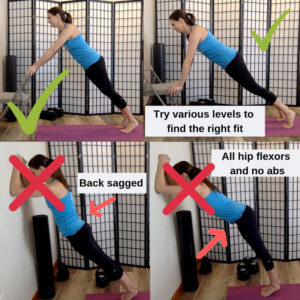
Last thing I want you to play around with is your tongue positioning. If you’re having a hard time with head alignment or your back dropping, try pressing your tongue forward into your top teeth and see if that changes your alignment. If you’re having trouble with doming out of your diastasis or too much pelvic floor pressure, try pulling your tongue back away from your teeth and opening your throat. This will help decrease pressure in the body.
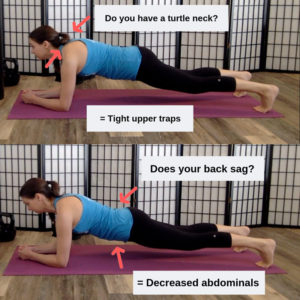
So that's your plank challenge! Can you do a plank with great form and feel your abs working without neck or back tightness? If so, great job on your planks!
Free Pelvic Floor Educational Series
Dr. Sarah Duvall, PT, DPT, CPT and the CES Team have helped thousands of women create the strength and stability needed to overcome common and not-so-common pelvic floor issues.
Join us today for this 4-part Pelvic Floor Video Series, absolutely free.
We don't spam or give your information to any third parties. View our Terms of Use and Privacy Policy.
Having trouble signing up? Click here

Related Articles
- « Previous
- 1
- …
- 3
- 4
- 5

